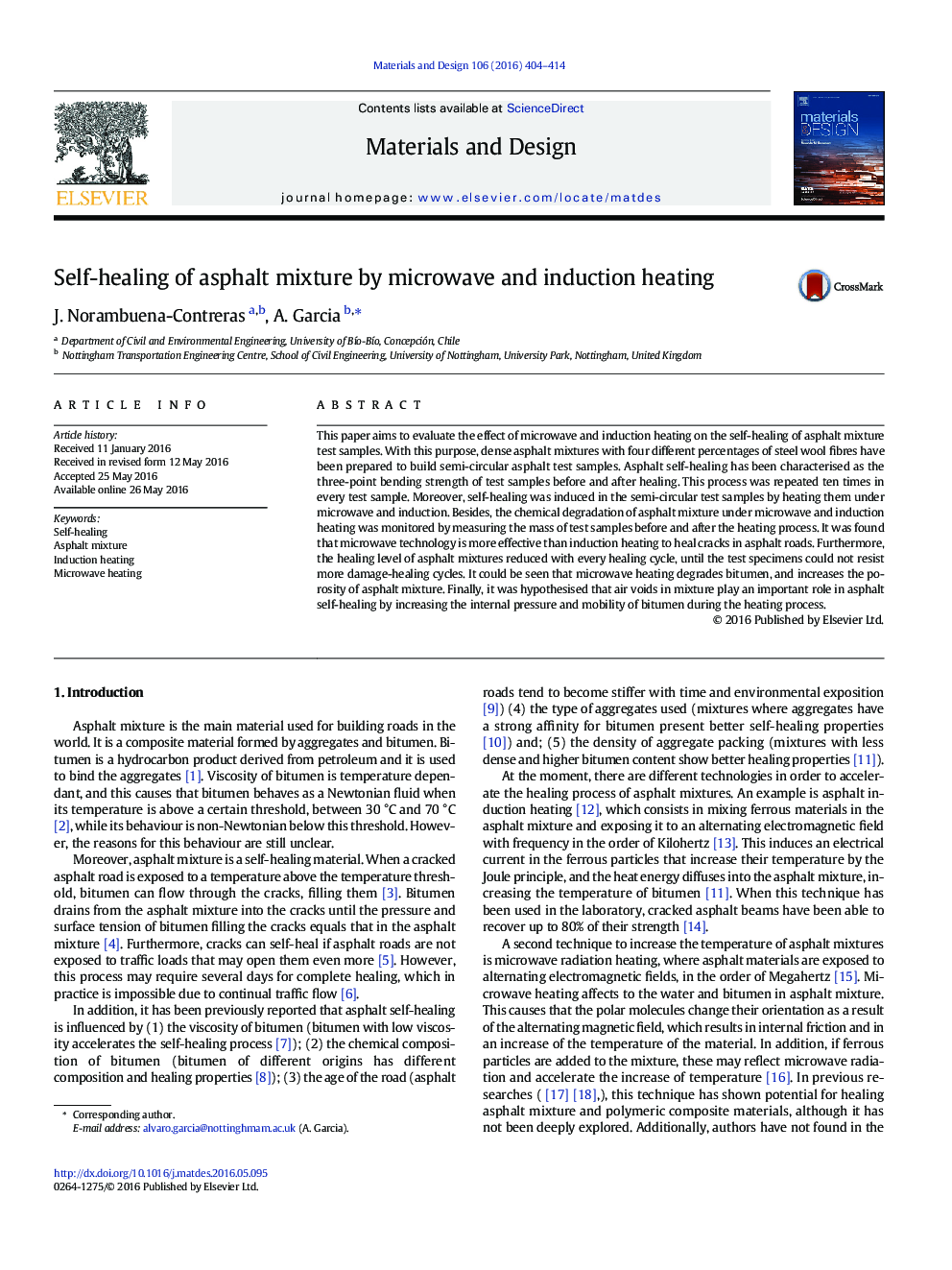| Article ID | Journal | Published Year | Pages | File Type |
|---|---|---|---|---|
| 827901 | Materials & Design | 2016 | 11 Pages |
•Asphalt mixture was healed using induction and microwave heating.•At the same temperature microwave heating healed the cracks better than induction.•The healing level of asphalt mixture reduced with the number of healing cycles.•Microwave heating can change the air voids structure inside asphalt mixture and damage the chemical structure of the binder.
This paper aims to evaluate the effect of microwave and induction heating on the self-healing of asphalt mixture test samples. With this purpose, dense asphalt mixtures with four different percentages of steel wool fibres have been prepared to build semi-circular asphalt test samples. Asphalt self-healing has been characterised as the three-point bending strength of test samples before and after healing. This process was repeated ten times in every test sample. Moreover, self-healing was induced in the semi-circular test samples by heating them under microwave and induction. Besides, the chemical degradation of asphalt mixture under microwave and induction heating was monitored by measuring the mass of test samples before and after the heating process. It was found that microwave technology is more effective than induction heating to heal cracks in asphalt roads. Furthermore, the healing level of asphalt mixtures reduced with every healing cycle, until the test specimens could not resist more damage-healing cycles. It could be seen that microwave heating degrades bitumen, and increases the porosity of asphalt mixture. Finally, it was hypothesised that air voids in mixture play an important role in asphalt self-healing by increasing the internal pressure and mobility of bitumen during the heating process.
Graphical abstractFigure optionsDownload full-size imageDownload as PowerPoint slide
